
Historic Charm of Festung Marienberg
Discover the historic allure of Festung Marienberg in Würzburg, Germany – a fortress with panoramic views, rich cultural heritage, and captivating Renaissance architecture.
Perched majestically on a hill overlooking the city of Würzburg, Festung Marienberg is a fortress that offers a glimpse into Germany's rich history. This iconic landmark, with its impressive fortifications and splendid Renaissance architecture, has stood the test of time since its construction began in the early 13th century. Visitors are greeted with panoramic views of the Main River and the sprawling vineyards below, making it a picturesque spot for photography and leisurely strolls. The fortress complex houses the Mainfränkisches Museum, which boasts an extensive collection of Franconian art and artifacts, including the famous Tilman Riemenschneider sculptures. As you wander through the fortress grounds, you'll encounter lush gardens, ancient chapels, and the majestic Prince's Building, each narrating tales of the fortress's strategic military importance and its evolution over the centuries. For those interested in history, guided tours are available, offering detailed insights into the fortress's past, from its medieval origins to its role in the Thirty Years' War and its partial destruction during World War II. The well-preserved ramparts and bastions provide a fascinating journey through time, while the on-site café offers a relaxing spot to enjoy local delicacies with a view.
Local tips in Festung Marienberg
- Wear comfortable shoes as the terrain can be uneven and there is quite a bit of walking involved.
- Check the schedule for guided tours to enhance your understanding of the site's history.
- Visit early in the morning or late in the afternoon to avoid the peak tourist crowds.
- Don't miss the Mainfränkisches Museum for a deep dive into Franconian art and culture.
- Bring a camera to capture the stunning views of the Main River and the surrounding vineyards.
Historic Charm of Festung Marienberg
Perched majestically on a hill overlooking the city of Würzburg, Festung Marienberg is a fortress that offers a glimpse into Germany's rich history. This iconic landmark, with its impressive fortifications and splendid Renaissance architecture, has stood the test of time since its construction began in the early 13th century. Visitors are greeted with panoramic views of the Main River and the sprawling vineyards below, making it a picturesque spot for photography and leisurely strolls. The fortress complex houses the Mainfränkisches Museum, which boasts an extensive collection of Franconian art and artifacts, including the famous Tilman Riemenschneider sculptures. As you wander through the fortress grounds, you'll encounter lush gardens, ancient chapels, and the majestic Prince's Building, each narrating tales of the fortress's strategic military importance and its evolution over the centuries. For those interested in history, guided tours are available, offering detailed insights into the fortress's past, from its medieval origins to its role in the Thirty Years' War and its partial destruction during World War II. The well-preserved ramparts and bastions provide a fascinating journey through time, while the on-site café offers a relaxing spot to enjoy local delicacies with a view.
Iconic landmarks you can’t miss
Marienberg Fortress
Discover the enchanting Marienberg Fortress in Würzburg: a historic landmark with breathtaking views and rich cultural heritage.

Aussichtspunkt Festung Marienberg
Experience stunning views and rich history at Aussichtspunkt Festung Marienberg, the iconic fortress overlooking Würzburg and the picturesque Main River.

Maschikuli Tower
Explore Würzburg's Maschikuli Tower, a historical landmark offering breathtaking views and a glimpse into the region's rich cultural heritage.

Marienberg viewpoint over Würzburg
Discover the stunning panoramic views of Würzburg at Marienberg viewpoint, a perfect blend of history and scenic beauty.

Marienkirche Festung Marienberg
Explore the stunning Marienkirche Festung Marienberg in Würzburg, a Baroque masterpiece with breathtaking views and rich historical significance.
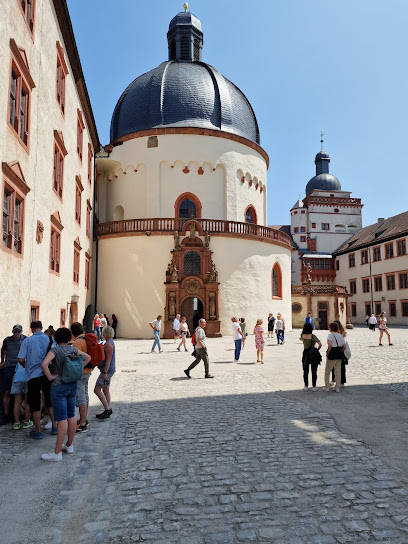
Festung Marienberg Blick
Discover the stunning views and rich history at Festung Marienberg, a must-visit fortress in Würzburg, Germany, showcasing the city's vibrant heritage.

Unmissable attractions to see
Japanese Garden
Explore the serene beauty of the Japanese Garden in Würzburg, a tranquil oasis showcasing traditional Japanese landscaping and vibrant nature.

Lower Franconian Museum
Uncover the artistic and historical treasures of Franconia at the Lower Franconian Museum, an essential stop for any Würzburg visitor.

Maschikuli Tower
Explore the Maschikuli Tower in Würzburg, a historical landmark offering stunning views and rich heritage amidst enchanting gardens.

Fürstenbaumuseum
Explore the Fürstenbaumuseum in Würzburg for an enriching journey through local history, art, and culture within a stunning fortress setting.

Marienberg
Explore the historic Marienberg Fortress in Würzburg, a stunning blend of rich history, breathtaking views, and cultural treasures.

Blockhaus und Totempfahl
Explore the rich cultural heritage of Würzburg at Blockhaus und Totempfahl, a unique blend of history and art nestled in the heart of the city.

Festung Marienberg Blick
Explore Festung Marienberg, a stunning fortress in Würzburg, offering rich history, breathtaking views, and a glimpse into Bavarian culture.

Barockfiguren
Explore the exquisite baroque sculptures at Barockfiguren in Würzburg, a captivating tourist attraction steeped in history and artistic beauty.
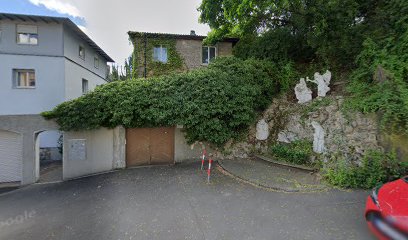
Essential places to dine
Almoço e jantar Brewery Inn Alter Kranen
Experience authentic German cuisine with stunning riverside views at Brewery Inn Alter Kranen in Würzburg.

Backöfele
Discover the flavors of Franconia at Backöfele – where traditional Bavarian cuisine meets warm hospitality in the heart of Würzburg.

Gasthaus Alte Mainmühle
Experience exquisite German cuisine with stunning views at Gasthaus Alte Mainmühle in beautiful Würzburg.

Bürgerspital-Weinstuben
Discover the authentic taste of Franconian cuisine at Bürgerspital-Weinstuben in Würzburg—where tradition meets exceptional dining.

Würzburger Ratskeller
Discover authentic Franconian cuisine at Würzburger Ratskeller – where tradition meets taste in a charming setting.

Wirtshaus am Dom Würzburg
Experience authentic European cuisine at Wirtshaus am Dom in Würzburg - where tradition meets taste in a charming setting.

Nikolaushof
Experience authentic Franconian cuisine at Nikolaushof in Würzburg - where tradition meets taste in a cozy atmosphere.

Restaurant Adria / Würzburg
Experience the best of Croatian and Italian cuisine at Restaurant Adria in Würzburg's historic Altstadt.

Franziskaner - Würzburg
Savor authentic German cuisine in the heart of Würzburg at Franziskaner - where tradition meets flavor.
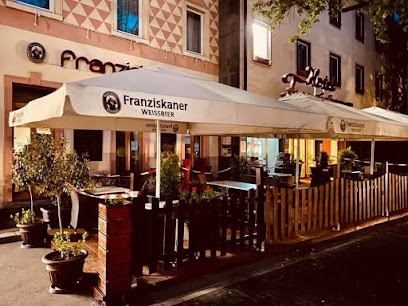
Aifach Reisers
Discover Aifach Reisers in Würzburg for a delightful blend of traditional German cuisine and modern culinary artistry.
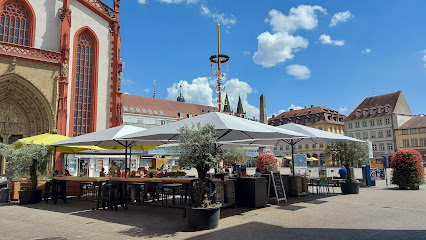
Markets, malls and hidden boutiques
Galeria Kaufhof
Explore a shopping haven at Galeria Kaufhof in Würzburg, where local charm meets a diverse selection of products for every traveler.

TK Maxx
Explore TK Maxx in Würzburg for fabulous fashion finds at unbeatable prices, perfect for budget-savvy shoppers seeking unique styles.

Blowout skate and snowboard shop
Discover the best in skate and snowboard gear at Blowout Skate and Snowboard Shop in Würzburg, a hub for action sports enthusiasts.
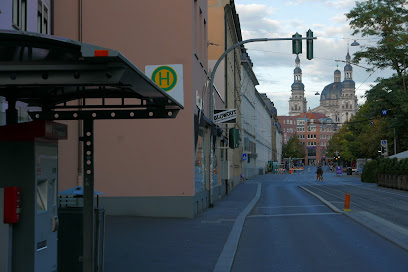
The Murmel
Explore The Murmel in Würzburg, a magical toy store filled with unique gifts and enchanting toys for all ages.
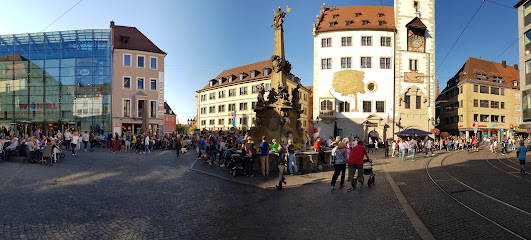
Frau Huegel - The store
Discover the charm of Würzburg at Frau Huegel, a boutique clothing store offering unique styles and a personalized shopping experience.

Schlier - Modehaus in Würzburg
Discover a diverse selection of high-quality fashion at Schlier, Würzburg's premier clothing store for the whole family.

Skand Store
Explore Skand Store, a charming gift shop in Würzburg, offering unique clothing and souvenirs that embody local culture and style.

Eton Place - Schönes aus England
Explore Eton Place in Würzburg for a unique selection of authentic British gifts, perfect for souvenirs that capture the essence of England.

#BLOGGED - Die Boutique
Discover unique women's fashion at #BLOGGED - Die Boutique in Würzburg, where style meets quality in a charming shopping experience.

Dies & Das
Explore Würzburg's charm at Dies & Das, a gift shop filled with unique handcrafted treasures reflecting local culture and artistry.

Essential bars & hidden hideouts
Biertümpel
Experience the heart of Würzburg's nightlife at Biertümpel, where local beers and friendly vibes create an unforgettable atmosphere.

Loma
Discover Loma, Würzburg's vibrant bar that offers exquisite drinks and an electrifying atmosphere for nightlife lovers.
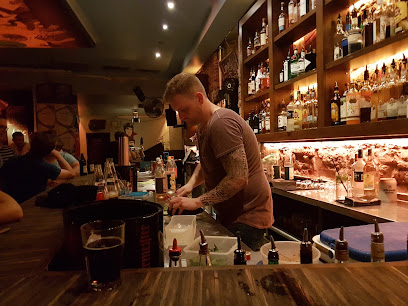
Weinstube und Bierkeller Till Eulenspiegel
Savor the flavors of Würzburg at Weinstube und Bierkeller Till Eulenspiegel, where exquisite wines meet authentic German cuisine in a cozy setting.

Chase Bar
Experience the vibrant nightlife at Chase Bar in Würzburg, where creative cocktails and energetic music create unforgettable memories.

hoch3 - Skylounge
Discover the elegance of hoch3 - Skylounge, where breathtaking views and exquisite cocktails meet in the heart of Würzburg.

Hoffnung - Würzburg
Experience the vibrant nightlife of Würzburg at Hoffnung, a bar that perfectly blends local charm with a lively atmosphere.

Mekong - Würzburg
Discover the lively ambiance and diverse drink selection at Mekong - Würzburg, a vibrant bar perfect for unwinding and socializing.

Moritz Bar
Experience the lively atmosphere of Moritz Bar in Würzburg, where great drinks and social connections await you.

Bar SIGMA - Würzburg
Discover the lively nightlife at Bar SIGMA in Würzburg, offering a unique blend of vibrant atmosphere and expertly crafted cocktails.

Hotelbar Mainhattan
Experience the perfect blend of elegance and relaxation at Hotelbar Mainhattan in Würzburg, where exceptional drinks meet a stylish atmosphere.
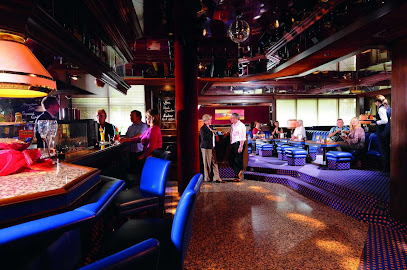
Local Phrases
-
- HelloHallo
[hah-loh] - GoodbyeAuf Wiedersehen
[owf vee-der-zay-en] - YesJa
[yah] - NoNein
[nine] - Please/You're welcomeBitte
[bih-tuh] - Thank youDanke
[dahn-kuh] - Excuse me/SorryEntschuldigung
[ent-shool-dee-goong] - How are you?Wie geht es dir?
[vee gayt ess deer] - Fine. And you?Gut. Und dir?
[goot oond deer] - Do you speak English?Sprechen Sie Englisch?
[shpre-khen zee eng-leesh] - I don't understandIch verstehe nicht
[ikh fer-shtay-uh nikht]
- HelloHallo
-
- I'd like to see the menu, pleaseIch möchte die Speisekarte sehen, bitte
[ikh merkht-uh dee shpy-zuh-kahr-tuh zay-en, bih-tuh] - I don't eat meatIch esse kein Fleisch
[ikh ess-uh kine fly-sh] - Cheers!Prost!
[prohst] - I would like to pay, pleaseIch möchte bitte zahlen
[ikh merkht-uh bih-tuh tsah-len]
- I'd like to see the menu, pleaseIch möchte die Speisekarte sehen, bitte
-
- Help!Hilfe!
[hil-fuh] - Go away!Geh weg!
[geh vehg] - Call the Police!Rufen Sie die Polizei!
[roo-fen zee dee poh-lee-tsye] - Call a doctor!Rufen Sie einen Arzt!
[roo-fen zee eye-nen ahrts] - I'm lostIch habe mich verirrt
[ikh hah-buh mish feh-rihrt] - I'm illIch bin krank
[ikh been kr-ahnk]
- Help!Hilfe!
-
- I'd like to buy...Ich möchte kaufen...
[ikh merkht-uh kow-fen] - I'm just lookingIch schaue nur
[ikh sh-ow-uh noor] - How much is it?Wie viel kostet es?
[vee feel kohstet es] - That's too expensiveDas ist zu teuer
[dahs ist tsoy toy-er] - Can you lower the price?Können Sie den Preis senken?
[ker-nen zee den price sahn-ken]
- I'd like to buy...Ich möchte kaufen...
-
- What time is it?Wie spät ist es?
[vee shpeht ist es] - It's one o'clockEs ist ein Uhr
[es ist eye-n oor] - Half past (10)Halb (zehn)
[halb (tsayn)] - MorningMorgen
[mor-gen] - AfternoonNachmittag
[nahk-mit-tahk] - EveningAbend
[ah-bent] - YesterdayGestern
[geh-stern] - TodayHeute
[hoi-tuh] - TomorrowMorgen
[mor-gen] - 1Eins
[eyns] - 2Zwei
[tsvai] - 3Drei
[dry] - 4Vier
[feer] - 5Fünf
[fuhnf] - 6Sechs
[zeks] - 7Sieben
[zee-ben] - 8Acht
[ahkt] - 9Neun
[noyn] - 10Zehn
[tsayn]
- What time is it?Wie spät ist es?
-
- Where's a/the...?Wo ist ein/der...?
[vo ist eye-n/dehr] - What's the address?Was ist die Adresse?
[vas ist dee ah-drehs-seh] - Can you show me (on the map)?Können Sie mir zeigen (auf der Karte)?
[ker-nen zee meer tsay-gen (owf dehr kar-tuh)] - When's the next (bus)?Wann kommt der nächste (Bus)?
[vahn kohmt dehr n-ehk-stuh (boos)] - A ticket (to ....)Eine Fahrkarte (nach ...)
[ey-nuh fahr-kahr-tuh (nahkh ...)]
- Where's a/the...?Wo ist ein/der...?
History of Festung Marienberg
-
Festung Marienberg, the fortress overlooking Würzburg, has its roots in the early Middle Ages, originally constructed as a simple wooden fortification in the 13th century. It served as the residence of the Prince-Bishops of Würzburg, reflecting the region's ecclesiastical power and importance. The site was strategically chosen for its elevated position, providing a commanding view over the Main River and the surrounding valley.
-
During the Renaissance, particularly in the 16th century, Festung Marienberg underwent significant renovations and expansions under the direction of Prince-Bishop Julius Echter von Mespelbrunn. The fortress was transformed into a formidable stone structure, featuring ornate architecture that showcased the wealth and power of the bishopric. This period saw the addition of the iconic Baroque elements that define the fortress today.
-
The fortress played a critical role during the Thirty Years' War (1618-1648) as a military stronghold. In 1631, it withstood a siege by Swedish forces, demonstrating its strategic importance. However, the war left deep scars on the region, and Festung Marienberg's military significance continued to evolve as it adapted to changing warfare tactics in subsequent decades.
-
The Napoleonic Wars and the subsequent secularization of church properties in the early 19th century led to a decline in the fortress's military importance. In 1803, the Prince-Bishopric was dissolved, and Festung Marienberg was repurposed. The fortress was used for various secular functions, including as a barracks and a prison, marking a shift in its role within Würzburg.
-
During World War II, Würzburg was heavily bombed, and while Festung Marienberg sustained damage, it largely survived the destruction that befell the city. Post-war efforts focused on restoration, allowing the fortress to reclaim its status as a symbol of Würzburg's history and resilience. Today, it serves as a museum and cultural venue, showcasing the rich heritage of the region.
Festung Marienberg Essentials
-
Festung Marienberg is easily accessible from various neighborhoods in Würzburg. If you are coming from the city center, you can take bus line 6, which stops near the fortress. Alternatively, it's a pleasant 20-minute walk from the city center, offering scenic views along the way. For those arriving by train, Würzburg Hauptbahnhof (the main station) is well-connected to major cities in Germany. From there, you can take a tram or a taxi to reach Festung Marienberg.
-
While Festung Marienberg is primarily pedestrian-friendly, local buses also connect the area to the rest of Würzburg. The nearest bus stop is 'Festung Marienberg', served by bus line 6. Bicycles can be rented from various locations in the city for those who prefer cycling. The fortress itself has well-maintained paths, making it easy to explore on foot.
-
Festung Marienberg is generally a safe area for tourists. However, standard precautions are advisable. Avoid poorly lit areas at night and keep your belongings secure. While there are no specific high-crime areas in the vicinity, petty theft can occur in crowded areas, so remain vigilant in busy spots.
-
In case of an emergency, dial 112 for immediate assistance in Germany. This number connects you to emergency services including police, fire, and medical assistance. The nearest hospital is Klinik Würzburg, located approximately 2 km away. Always ensure you have travel insurance that covers emergencies.
-
Fashion: Do wear comfortable shoes suitable for walking on uneven surfaces, and dress in layers as the weather can change. Don't wear overly casual attire when visiting the fortress, as it is a historical site. Religion: Do respect the site’s historical significance. Public Transport: Do validate your ticket before boarding public transport. Don’t talk loudly or eat on public transport. Greetings: Do greet locals with a friendly 'Hallo' or 'Guten Tag'. Eating & Drinking: Do enjoy local wines and traditional dishes at the fortress cafe. Don’t waste food or leave a mess at dining establishments.
-
To experience Festung Marienberg like a local, try to visit during the early morning or late afternoon to avoid crowds. Explore the less-traveled paths around the fortress for stunning views of Würzburg and the Main River. Engage with local shopkeepers and ask about their products; many are eager to share stories about the fortress. Don't miss the wine cellar tours offered at the fortress for a unique taste of the region's famous wines.
Nearby Cities to Festung Marienberg
-
Things To Do in Rothenburg ob der Tauber
-
Things To Do in Nuremberg
-
Things To Do in Frankfurt
-
Things To Do in Heidelberg
-
Things To Do in Stuttgart
-
Things To Do in Erfurt
-
Things To Do in Koblenz
-
Things To Do in Strasbourg
-
Things To Do in Karlovy Vary
-
Things To Do in Munich
-
Things To Do in Bonn
-
Things To Do in Leipzig
-
Things To Do in Cologne
-
Things To Do in Plzeň
-
Things To Do in Grevenmacher












